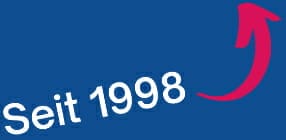Schnelle Übersicht:
by Tibor Schiemann
I admit it—I’d rather play Monkey Island (1990) or Wing Commander III (1994) before even thinking about Crysis 2 or Skyrim. My passion for PC gaming started at the tender age of 10 when my dad got us a 486 DX4 with 100 MHz, 8 MB of RAM, a 1 MB Cirrus Logic VGA graphics card, and a 2x speed CD-ROM drive. Since then, I have enjoyed LucasArts adventures, early 3D shooters and many other classic games.

Want to revisit these simpler times? It’s not easy running DOS, Windows 3.x, or Windows 9x games on modern machines—the architecture of both hardware and software has changed a lot over the past 15–25 years. In this blog post, we’ll talk about a couple of ways to easily run these old games on Windows 7 PCs.
DOSBox: Play All of Your Favorite DOS Games!
Most games from the 1980s and 1990s ran under DOS, the Disk Operating System which is a command-line operating system by Microsoft that powered most 286-, 386- and 486-era PCs. Even when Windows 3.x and Windows 95 were widely used and came pre-installed on PCs, DOS was the backbone of these systems, and thus, most games required it.
Today, DOS is extinct and not part of Windows anymore. And no, most games won’t run under the command line of Windows 7. Even if they did, classic games were sensitive to CPU clock speeds. What ran fine with 33, 66, or 100 MHz won’t run as great with clock speeds of up to 3800 MHz today. DOSbox gets around this by emulating an old PC and automatically adjusting speeds to the type of DOS application you’re running. Hit up its “Performance” section to see how you can optimize the speeds and see how it works.
DOSBox is easy to set up, but it requires some command-line skills:
1. Download and install DOSBox from this website. Copy all of your DOS-based games into a folder, for example, “C:DOSGames”, and launch DOSBox. You’ll find yourself in the “Z:” folder.

2. Next, mount one of your local folders to a drive letter on DOSBox. It has no direct access to your drives, such as your hard disk (C:) or your DVD Drive (D:). For example, I put the game Sim City 2000 under “C:DOSGames”, and IDd like to mount this folder as the DOSBox drive letter “G:”. Also, make sure to shorten all folder names since you’ll need to type them all in by hand and to prevent any struggle with the “tilde”.

Here’s how that works. Simply type in “mount g: c:DOSGames”. Next, type in the drive letter “G:”, and hit enter. Enter “Dir” to see the contents of this drive. It should reflect the contents of your local folder, “C:DOSGames”.

To switch to a subfolder, type in “CD game” (replace the game with the name of your game folder). In my example, I switched to the “SIMCITY” folder by typing in “cd simcity”.

Type in “DIR” again to see which of these files runs the game. The file name usually resembles the name of the game and ends with the extension “.exe”, “.com”, or “.bat”.

3. After you’ve typed in the name of the game executable file, hit ENTER to run it.

If you have problems running any game, just check out DOSBox’s massive compatibility list or hit up its forums to see if others are experiencing the same issues.
ScummVM: Playing LucasArts, Sierra, Activision, and Adventuresoft Classics
A huge part of the 1980s and 1990s was dominated by point & click adventure games. LucasArts dominated this genre with classics such as Indiana Jones and The Fate of Atlantis and Day of the Tentacle.
Since these games were made for computers that were not even a fraction as powerful as the typical smartphone (not to mention a high-end gaming PC) today, they usually don’t work well or won’t even run at all. Thankfully, Eugene Sandulenko and his massive team created ScummVM, a tool that runs LucasArts classics at their respective speeds and scales them up perfectly for today’s screens. Over the years, the team expanded to support point-&-click games from makers like Simon the Sorcerer and Leisure Suit Larry.
Auf Windows Tweaks finden Sie zeitsparende Anleitungen rund um PC, Software & Microsoft. Für einen stressfreien digitalen Alltag. Bereits seit 1998 "tweaken" wir Windows und hören einfach nicht mehr auf!



